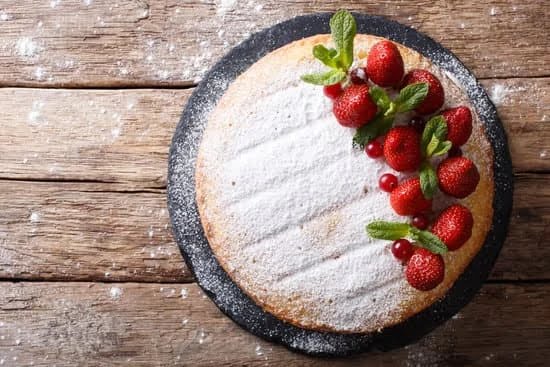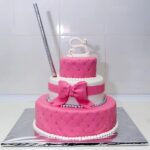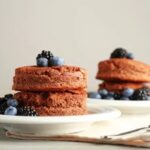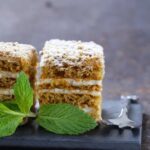Cake decorating has become a popular and important art form that allows individuals to showcase their creativity and passion in the most delicious way possible. This essential guide will take you on a journey through the world of cake decorating, highlighting exciting techniques, must-have tools, and expert tips that will help you create stunning cake designs for any occasion.
In the realm of cake decorating, there is no shortage of excitement and creativity. From elegant wedding cakes to whimsical birthday creations, the possibilities are endless. This article will delve into various aspects of cake decorating, providing you with all the information you need to unleash your inner artist.
First and foremost, we will explore the must-have tools for successful cake decoration. Just like any craft, having high-quality equipment is vital to achieving professional results. We’ll discuss everything from piping bags and tips to offset spatulas and turntables that make your cake decorating process seamless.
Aside from tools, one cannot ignore the significance of fondant in creating exquisite cake finishes. We will dive into different types of fondant and provide step-by-step instructions on how to work with them for flawless results. Additionally, we’ll explore buttercream frosting techniques that allow you to create a wide range of designs, from intricate piping work to smooth finishes.
Edible decorations play a crucial role in elevating your cake designs. In this article, we’ll show you how to make realistic flowers and delicate sugar figurines that can transform an ordinary cake into a masterpiece. Furthermore, we’ll provide creative design ideas for different occasions such as birthdays, weddings, baby showers, or any event where a beautifully designed cake is desired.
No matter how experienced you are in cake decorating, everyone faces challenges along the way. We’ll address common issues faced by decorators – uneven frosting or cracked fondant – and provide expert solutions and troubleshooting tips on how to overcome them effectively.
Lastly, this article will conclude by sharing expert recommendations on resources and courses for aspiring cake decorators. With the help of renowned cake decorators, we will recommend the best online resources, books, and courses that will further enhance your skills.
With this essential guide to everything for cake decorating, we invite you to unleash your creativity and embark on an exciting journey filled with buttercream frosting, fondant artistry, and awe-inspiring designs. So roll up your sleeves, grab your piping bags, and let’s begin creating edible masterpieces together.
The Must-Have Tools for Cake Decorating
Cake decorating is an art form that requires a specific set of tools to achieve professional results. Whether you are a beginner or an experienced cake decorator, having the right equipment is crucial for creating stunning designs. Here are some must-have tools for cake decorating:
- Decorating Tips: These small metal tips come in various shapes and sizes and are used with piping bags to create different designs such as roses, swirls, and borders. Wilton is a well-known brand that offers a wide range of decorating tips.
- Piping Bags: Piping bags are essential for applying frosting or icing onto the cake. They come in disposable and reusable options, with the latter being more environmentally friendly. It’s recommended to have a few different sizes on hand to accommodate different techniques.
- Offset Spatula: An offset spatula is a long, flat tool with a bend in the blade. It is perfect for spreading and smoothing frosting onto cakes, creating clean edges and smooth surfaces.
- Turntable: A turntable is a rotating stand that allows you to easily rotate the cake while you decorate it. This ensures even application of frosting and makes intricate designs much easier to achieve.
- Cake Leveler: A cake leveler is used to trim off any uneven tops of cakes, ensuring that each layer is flat and easy to stack. This tool helps create professional-looking layered cakes with straight edges.
When it comes to cake decorating, investing in quality tools will make all the difference in your final results. While there may be cheaper alternatives available, opting for reputable brands known for their durability and functionality will save you time and frustration in the long run.
Types of Fondant and How to Use Them
Fondant is a versatile and popular ingredient in cake decorating that can give cakes a smooth and polished finish. There are different types of fondant available, each with its own unique characteristics and uses. Understanding the different types of fondant and how to use them can help cake decorators achieve professional-looking results.
Rolled Fondant
One of the most commonly used types of fondant is rolled fondant. This type of fondant has a dough-like consistency and is used to cover the entire cake for a smooth and flawless finish. Rolled fondant comes in various colors and flavors, allowing decorators to customize their creations.
To use rolled fondant, start by kneading it until it becomes pliable. Then, roll it out into a thin sheet using a rolling pin and carefully drape it over the cake. Smooth out any wrinkles or air bubbles using a fondant smoother or your hands.
Poured Fondant
Poured fondant, also known as icing or glaze, has a more liquid consistency compared to rolled fondant. It is typically used to cover small confections like petit fours or as filling for candies. Poured fondant is made by heating granulated sugar with water or cream until melted and then adding flavorings or colorings if desired. Once prepared, you can pour the mixture over your treats or dip them into the liquid fondant for an even coating.
Using either type of fondant requires some practice, but with time you will master the techniques needed to create stunning cake designs.
Troubleshooting Tips
Working with fondants can sometimes present challenges, such as cracking or elephant skin texture on the surface. These issues can be frustrating but are common among beginners. If your rolled fondant cracks while covering the cake, try using cornstarch or powdered sugar on your rolling pin and work surface to prevent sticking. Additionally, ensure that your cake is well-covered with a layer of buttercream or ganache to create a smooth surface for the fondant to adhere to.
If you encounter problems with poured fondant, such as it being too runny or thick, you can adjust the consistency by adding more powdered sugar to thicken it or warm water or cream to thin it out. It may take some practice and experimentation to achieve the desired texture, so don’t be afraid to make adjustments until you find the perfect balance.
Understanding the types of fondant available and how to work with them will give you more options in your cake decorating repertoire. Whether you choose rolled fondant for a sleek finish or poured fondant for delicate treats, mastering these techniques will allow you to create beautiful and professional-looking cakes that will impress everyone.
Mastering Buttercream Frosting Techniques
Buttercream frosting is one of the most versatile and popular options for cake decorating. Its creamy texture and smooth consistency make it perfect for creating stunning designs on cakes of all sizes and shapes. In this section, we will delve into the art of mastering buttercream frosting techniques that will elevate your cake decorating skills to the next level.
One of the key techniques in buttercream frosting is piping. Piping allows you to create intricate designs, borders, and lettering on your cakes. To start, you will need a piping bag fitted with a piping tip of your choice.
Popular tips for piping include round tips for basic outlines and writing, star tips for rosettes and decorative borders, and petal tips for creating realistic flower petals. Practice pressure control to achieve consistent results – applying more pressure to create thicker lines or flowers with more depth.
Rosettes are another popular buttercream frosting technique that adds a touch of elegance to any cake design. To create rosettes, use a star-shaped piping tip and hold it perpendicular to the surface of the cake. Starting from the center, squeeze the piping bag while maintaining steady pressure, then rotate your wrist in a circular motion as you move outward, creating a beautiful swirl effect. Experiment with different sizes and colors to achieve unique designs.
For those seeking a seamless finish on their cakes, smoothing buttercream frosting is essential. The key here is achieving an even layer of frosting around the entire cake surface without leaving any bumps or visible spatula marks.
Begin by applying a crumb coat – a thin layer of frosting that seals in any loose crumbs – then refrigerate for about 10 minutes before applying additional layers of frosting using an offset spatula or bench scraper. Once you’ve achieved a smooth base layer, use long scraping motions to remove any excess frosting while creating clean edges.
Mastering these buttercream techniques takes practice and patience but can result in breathtaking designs on your cakes. Don’t be afraid to experiment with different piping tips, colors, and textures to add your personal touch to each creation. With dedication, you’ll soon become a buttercream frosting pro, ready to take on any cake decorating challenge.
Edible Decorations
Edible decorations are an essential part of cake decorating, adding a touch of beauty and artistry to any cake. From delicate flowers to intricate figurines, these edible creations can take your cake designs to the next level. In this section, we will explore the art of creating edible decorations for cakes and provide tips and tricks on how to make them.
One popular technique in edible cake decoration is making realistic flowers out of various materials such as gum paste or fondant. These delicate blooms can be shaped and textured to resemble real flowers, adding a touch of elegance and sophistication to your cake designs. By using flower cutters, molds, and flower veiners, you can create lifelike petals, leaves, and even flower centers. Additionally, dusting powders or edible paints can be used to add depth and color to the flowers.
Another aspect of edible decorations is creating sugar figurines or cake toppers. Whether you want to make a small bride and groom for a wedding cake or adorable animal figurines for a child’s birthday cake, sugar modeling is a technique that allows for endless creativity. Modeling chocolate or fondant can be shaped into various forms and then painted with food coloring gels or dusts for added detail.
To enhance your cake design even further, consider using other edible decorations such as piped royal icing details, chocolate decorations, or even wafer paper accents. These additional elements can complement your flowers or figurines and add visual interest to the overall design.
Creating edible decorations requires practice and patience but can elevate your cakes from ordinary to extraordinary. Experiment with different techniques and materials to discover your own unique style in edible decoration. With time and practice, you will be able to create stunning cakes that showcase your artistic talent.
| Edible Decorations | Description |
|---|---|
| Realistic Flowers | Create beautiful flowers using gum paste or fondant, shaped and textured to resemble real flowers. Add depth and color with dusting powders or edible paints. |
| Sugar Figurines | Make sugar figurines or cake toppers using modeling chocolate or fondant. Shape and paint them to create adorable characters or personalized designs. |
| Additional Decorations | Enhance your cake design with piped royal icing details, chocolate decorations, or wafer paper accents to add visual interest and complement your main edible decorations. |
Creative Cake Design Ideas for Different Occasions
When it comes to cake decoration, creativity knows no bounds. Whether you’re celebrating a birthday, wedding, baby shower, or any other special occasion, there are endless possibilities for unique and eye-catching cake designs. In this section, we will explore some creative cake design ideas that are sure to impress your guests and make your event truly memorable.
For birthdays, consider incorporating the recipient’s hobbies or interests into the cake design. A sports-themed cake with edible replicas of their favorite team’s logo or a cake shaped like a musical instrument can be a delightful surprise. Another popular trend is the use of drip cakes, where colorful drips of chocolate or ganache cascade down the sides of the cake for a whimsical and modern look.
Weddings call for elegant and sophisticated cake designs that match the overall theme and decor. Opt for classic designs such as tiered cakes with intricate sugar lace details or delicate hand-painted florals. If you want something more unique, consider a naked cake adorned with fresh flowers for a rustic touch or a geode-inspired cake showcasing vibrant edible crystals.
Baby showers provide an opportunity to play with adorable themes and colors. Animal-themed cakes featuring cute critters like elephants or giraffes are always a hit. Gender reveal cakes have also gained popularity – surprise your guests by incorporating either pink or blue filling in the middle layer of the cake to reveal whether you’re expecting a boy or girl.
| Cake Design | Occasion |
|---|---|
| Sports-Themed Cake | Birthday Party |
| Hand-Painted Floral Tiered Cake | Wedding |
| Animal-themed Gender Reveal Cake | Baby Shower |
Remember, the key to a successful cake design is to have fun and let your imagination run wild. Don’t be afraid to experiment with new techniques, flavors, and decorations. With a little creativity and some basic cake decorating skills, you’ll be on your way to creating show-stopping cakes for any occasion.
Troubleshooting Common Cake Decorating Problems
Uneven Frosting
Uneven frosting can be a common issue that cake decorators may face when trying to achieve a smooth and professional finish. This can occur due to various factors, such as improper leveling of the cake layers or inconsistent spreading of the frosting. However, there are several solutions to fix this problem and achieve a flawless look.
One effective way to fix uneven frosting is by using a cake scraper or bench scraper. Hold the scraper against the side of the cake at a slight angle and rotate the turntable while holding the scraper steady. This will help smoothen out any imperfections and create an even layer of frosting. You can repeat this process until you achieve the desired smoothness.
Another technique to correct uneven frosting is by re-flattening your cake layers before applying the frosting. If one layer is slightly higher than the others, use a serrated knife to carefully level it off. Make sure to keep your knife parallel to the countertop for an even cut. By starting with evenly leveled cake layers, you can minimize the chances of having uneven frosting.
Cracked Fondant
Cracked fondant can be frustrating when trying to cover a cake seamlessly with this smooth and versatile medium. Fortunately, there are some steps you can take to prevent and fix cracked fondant.
Firstly, ensure that your cake is properly covered in buttercream or ganache before applying fondant. The buttercream helps create a smooth surface for fondant application and prevents it from sticking or cracking.
If you still encounter cracks after applying fondant, try gently smoothing them out with your fingers or a fondant smoother tool. Apply light pressure on the cracked areas while working in circular motions until the crack is no longer visible.
To prevent cracks in the first place, make sure that your fondant isn’t too thick or too thin when rolling it out. Aim for an even thickness of about 1/8 to 1/4 inch. Additionally, avoid stretching the fondant when covering the cake as it can cause it to crack. Instead, gently drape the fondant over the cake and smooth it from top to bottom using a fondant smoother.
Stiff Buttercream for Piping
Creating beautifully piped designs on cakes requires the use of stiff buttercream icing that holds its shape well. However, achieving the right consistency can sometimes be challenging. If your buttercream is too soft or runny, it can result in drooping or melted designs. Luckily, there are ways to make buttercream stiffer for piping.
One method is to gradually add more powdered sugar to your buttercream until you reach the desired stiffness. Start with small additions and mix well after each addition until you achieve the right consistency.
Another way to stiffen buttercream is by incorporating a stabilizer such as meringue powder or cream of tartar. These ingredients help improve the stability of buttercream and allow it to hold its shape better for piping.
If your buttercream is still too soft even after adding powdered sugar or stabilizers, refrigerating it for a short period can help firm it up before piping. Place the buttercream in a covered bowl or piping bag and refrigerate for about 10-15 minutes. Remember not to leave it in the fridge longer than necessary as overly cold buttercream can become difficult to pipe.
By following these tips and troubleshooting solutions, aspiring cake decorators can overcome common problems they may encounter during their cake decorating journey. With practice and perseverance, mastering these troubleshooting techniques will help elevate their skills and produce stunning cake designs.
Expert Recommendations
Cake decorating is an art form that requires both creativity and skill. To continue honing your cake decorating abilities, it can be helpful to seek out additional resources and courses. Whether you’re a beginner looking to learn the basics or an experienced decorator wanting to expand your repertoire, there are many valuable resources available.
Online Resources
- CakeCentral: This website provides a wealth of information for cake decorators at all levels. It offers forums where decorators can connect and share ideas, as well as galleries with countless photos for inspiration.
- YouTube Tutorials: YouTube is a treasure trove of free cake decorating tutorials. From basic techniques to advanced designs, you can find step-by-step videos that demonstrate various aspects of cake decoration.
- Blogs: Many experienced cake decorators have their own blogs where they share tips, tricks, and tutorials. These blogs can offer unique insights and inspiration from professionals in the field.
Books
- “The Contemporary Cake Decorating Bible” by Lindy Smith: This comprehensive book covers a wide range of techniques and designs, making it suitable for decorators of all skill levels.
- “The Complete Photo Guide to Cake Decorating” by Autumn Carpenter: This book is a visual guide that walks you through different decorating styles, including fondant, buttercream, and more. It includes step-by-step instructions accompanied by detailed photographs.
- “The Wilton Method of Cake Decorating” by Wilton: Known for their high-quality tools and products, Wilton offers this book as an extensive guide to cake decorating. It covers various techniques using both fondant and buttercream.
Courses
- Craftsy: This online learning platform offers a variety of cake decorating courses taught by expert instructors. You can choose from classes on specific techniques or opt for comprehensive courses that cover multiple aspects of cake decoration.
- Local Community Centers or Culinary Schools: Check your local community center or culinary school for cake decorating classes. These in-person courses provide hands-on instruction and an opportunity to learn from experienced decorators in your area.
- Cake Decorating Conventions and Workshops: Attending cake decorating conventions and workshops allows you to learn from top professionals in the industry. These events often feature demonstrations, hands-on classes, and networking opportunities with fellow decorators.
By taking advantage of these resources and courses, you can continue to develop your skills as a cake decorator. Whether it’s through online learning platforms, books, or in-person classes, there are numerous options available to suit every learning style and level of expertise. Happy decorating.
Conclusion
In conclusion, cake decorating is a captivating art form that allows individuals to express their creativity and create stunning edible masterpieces. From the essential tools needed for cake decoration to mastering techniques like fondant work and buttercream frosting, this article has provided a comprehensive guide to everything you need to know about cake decorating.
By exploring different types of fondant and learning how to work with them, readers can achieve seamless finishes on their cakes. Additionally, the versatility of buttercream frosting opens up endless possibilities for creating various designs using piping techniques, rosettes, and smooth finishes. The article also emphasizes the importance of edible decorations such as flowers and figurines in enhancing the visual appeal of cakes.
Furthermore, this article inspires readers with unique design ideas for different occasions while highlighting popular trends and techniques. Despite challenges that may arise during the cake decorating process, troubleshooting tips have been offered to help overcome common problems. Lastly, expert recommendations for online resources, books, and courses provide aspiring decorators with valuable insights and learning materials.
Frequently Asked Questions
What items do you need for cake decorating?
Cake decorating requires a variety of items to achieve beautiful and intricate designs. One essential item is a set of icing tips and piping bags that allow for different shapes and sizes of decorations to be created. These tips can range from round tips for outlining and writing to star or flower-shaped tips for creating borders or rosettes.
Another important tool is an offset spatula, which helps in smoothing the icing on the cake’s surface. A turntable is another must-have as it allows for easy rotation of the cake while decorating, ensuring evenness in design. Other tools like a cake leveler, fondant smoother, stencils, and edible decorations such as sprinkles or edible markers also add versatility to the decorating process.
What does a beginner need for cake decorating?
For beginners interested in cake decorating, there are a few essential items that should not be overlooked. First and foremost, a beginner needs quality basic tools like icing tips, piping bags, and a turntable to start practicing different techniques. It’s also helpful to have an offset spatula for spreading frosting smoothly onto the cake’s surface.
Basic food coloring gels are important for adding color to icings or fondants when experimenting with various designs. Additionally, investing in an instructional book or online tutorials specifically designed for beginners can provide valuable guidance and help build confidence in mastering techniques such as creating borders, rosettes, or simple flowers.
What are the three essentials of cake decorating?
The three essentials of cake decorating are precision, creativity, and patience. Precision plays a crucial role as even minor mistakes can significantly affect the overall design of the cake. Measuring ingredients accurately not only ensures consistent results but also influences factors like texture and stability of icings or batters.
Creativity is equally important as this allows decorators to think outside the box and experiment with different designs, colors, textures, and techniques to create unique cakes that stand out from the crowd. Patience is key because successful cake decoration takes time – from properly preparing the cake layers to meticulously applying the frosting or decorations. It’s important not to rush the process and instead allow each step to unfold at a comfortable pace, ensuring attention to detail and a professionally finished product.

Welcome to our cake decorating blog! My name is Destiny Flores, and I am the proud owner of a cake decorating business named Cake Karma. Our mission is to provide delicious, beautiful cakes for all occasions. We specialize in creating custom cakes that are tailored specifically to each customer’s individual needs and tastes.





